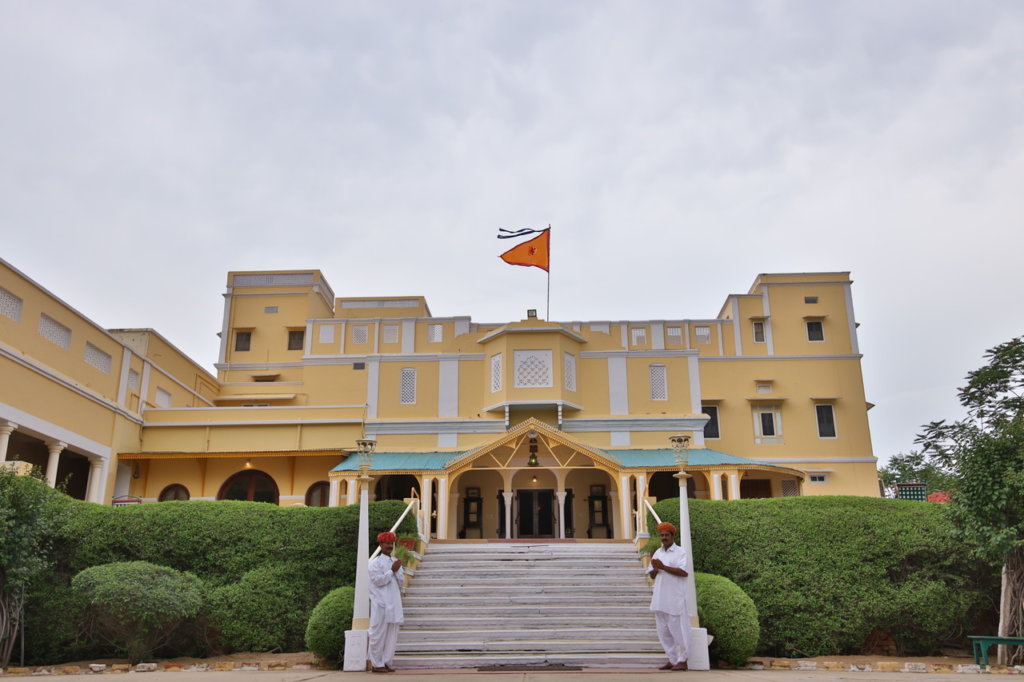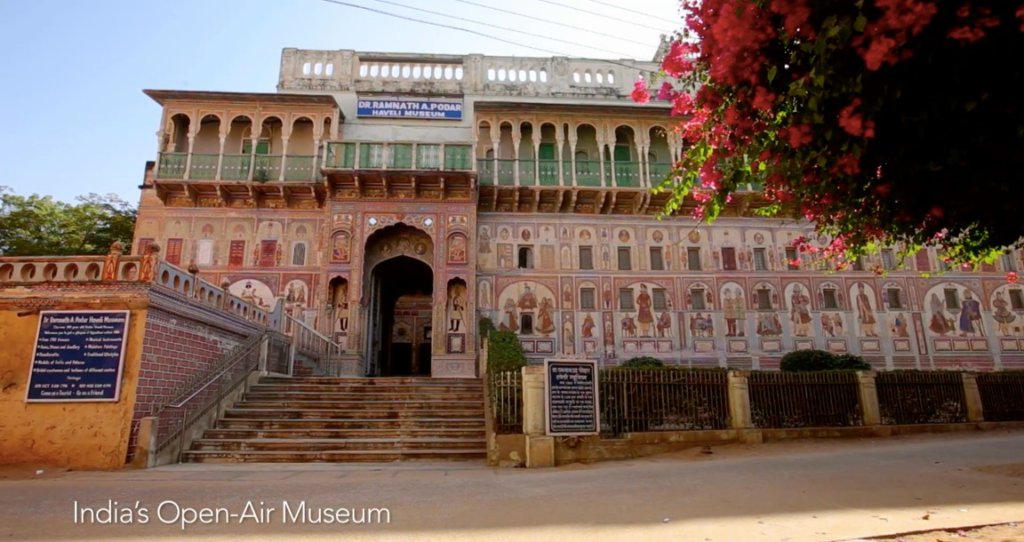It is believed that Europe, more specifically Italy, is home to the most stunning fresco art in the world. India, however, is not to be outdone in this regard. Nawalgarh, a small artistic town in the Sekhawati region of Rajasthan boasts of the finest frescos the country has produced. The oldest known fresco paintings in India adorn the ceilings and walls of the Ajanta and Ellora Caves, and these were painted between 200 BC and 600 BC. Fresco painting or Fresco art is created on walls or ceilings by applying pigment on to a thin layer of plaster. The walls and ceilings of numerous havelis in Nawalgarh have been decorated in this art form, and visitors are greeted by a melange of bright colors while walking through this fascinating town.
Known for its sprawling Havelis, the Sekhawati region is dotted with approximately 200 such architectural marvels. These havelis go as far back as the 18th and 19th century, when they were built by Marwari businessmen. Traditional havelis in India were typically built around a courtyard, and different parts of the haveli were designated for different activities. Since the purdah system in those times was observed strictly, a zenana (ladies section) was built specifically for the women folk. Men would discuss important matters of business in the guest rooms or baithaks. The havelis adorn fresco paintings of Hindu deities, animals, British and Indian rulers and interesting historical instances. The three types of Fresco art that you’ll majorly see in these parts are decorative, descriptive and portraits. Wooden doors and windows feature vibrant images of animals, flora and geometrical patterns.

At least 400 to 500 frescos decorate the interior and exterior walls of the Morarka Haveli, which is now a conservation museum. Renovated by conservation expert Dr. Hotchand, limestone, sand and red mud were used to strengthen the structure of the haveli and lime was used for the walls. At a short distance from Morarka Haveli, you’ll find Dr.Ramnath Podar Haveli which has also been converted to a museum and features a gallery of around 750 frescos. Landmark events from the British Raj, such as the first-ever tram built in India, and colourful railway coaches have been picturized in frescos and murals. Towards the end of the 19th century, there was an interesting shift in fresco art from religious themes to modern-age machinery. Frescos of camels, elephants and decorative patterns were juxtaposed with cars, hot-air balloons and bicycles. Just opposite Morarka Haveli, the famous Krishna Mandir which houses eleven lingas is a must-visit.
The prevalent European culture in British India had a deep impact on Nawalgarh’s artistic heritage. Kulwal Haveli bears the influence of the colonial era. Alongside pictures of Gandhi and Nehru, one can find the image of a European woman applying lipstick just above the main entrance door. The ornate structure of the haveli is reminiscent of Italian architecture, but the very core of the art that greets you upon entering is traditional and inspired from India’s rich landscape. A beautiful door studded with miniature peacocks opens to a scenic courtyard decorated with delicate motifs in red and blue.
Close to the Morarka Haveli, lies Bhagton ki Choti Haveli where an unusual range of murals await the visitor. This includes a portrait of queen Victoria and interestingly, renowned painter Frida Kahlo.
At the heart of Nawalgarh, the fort known as Bala Qila has now lost most of its splendour ever since modern buildings have sprung up in the area. It is now a centre of commercial activities and is a bustling vegetable market. Very close to Bala Qila is the beautiful Sheesh Mahal, which was once occupied by the Maharani of Nawalgarh. Its ceiling adorns spectacular mirror-work.
As you walk on, a group of six havelis known as Aanth havelis is hard to miss. The paintings in these havelis are not as ornamental in nature when compared to the others in the vicinity, but are fascinating nonetheless. While some havelis are undergoing renovation, there are murals and frescos in the town that need to be preserved.

After spending your day traversing Nawalgarh’s streets that are strewn with tiny shops, havelis, hawkers, open air art galleries and museums, it might be a great idea to retire to the serene ambience of Roop Niwas Kothi. Managed by the royals of Nawalgarh, here’s a luxurious hotel where you can unwind and experience Rajasthani hospitality at its best. The lush surroundings of the Kothi, a beautiful esplanade, and an inviting pool make this Kothi is an ideal homestay for visitors. If you’re interested in horse-riding, don’t look any further. Roop Niwas Kothi is one of the oldest hotels that offer an authentic horse riding experience. For exciting horseback safaris and for a fulfilling stay at a colonial home away from a home, Roop Niwas Kothi pulls out all the stops.


